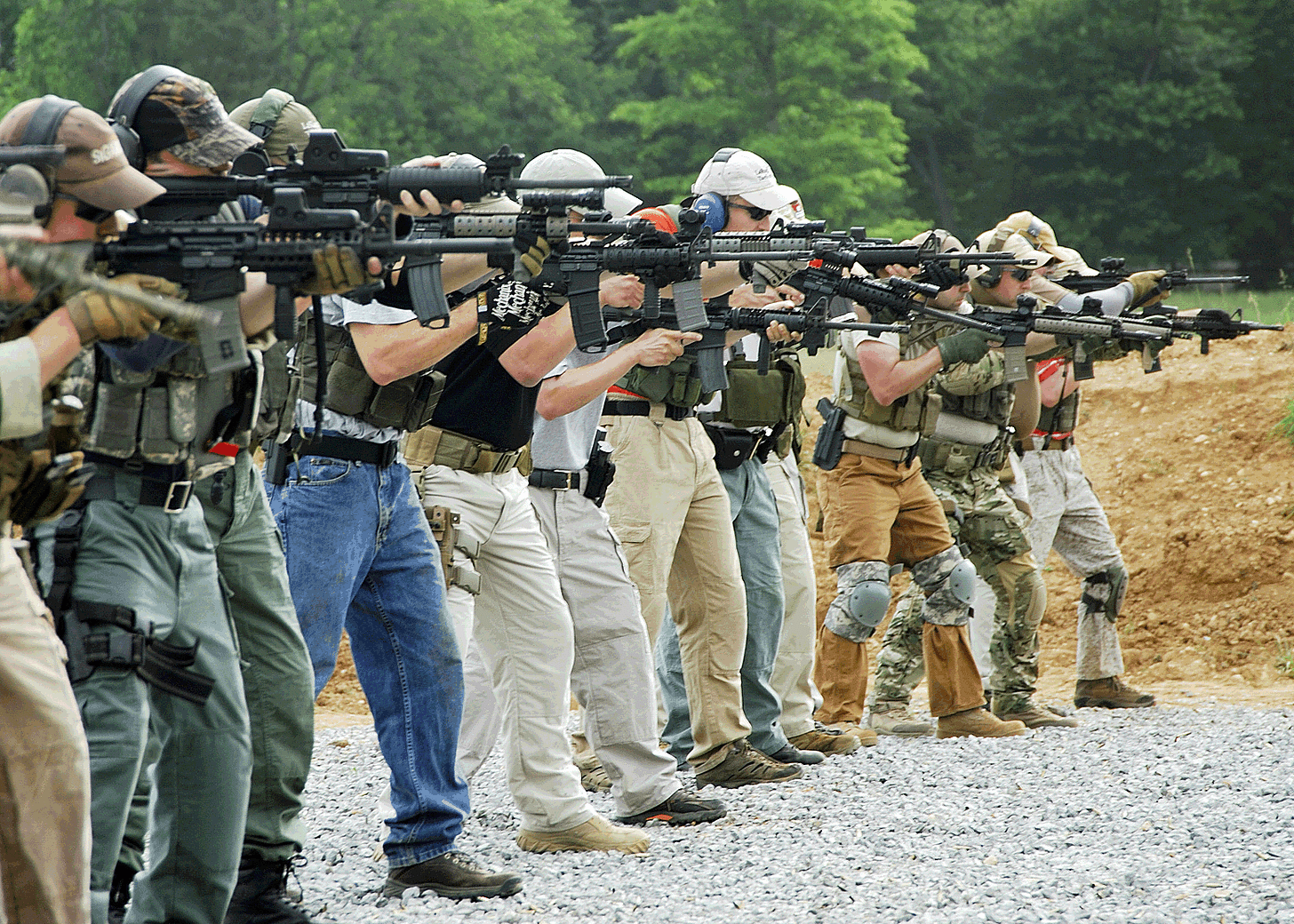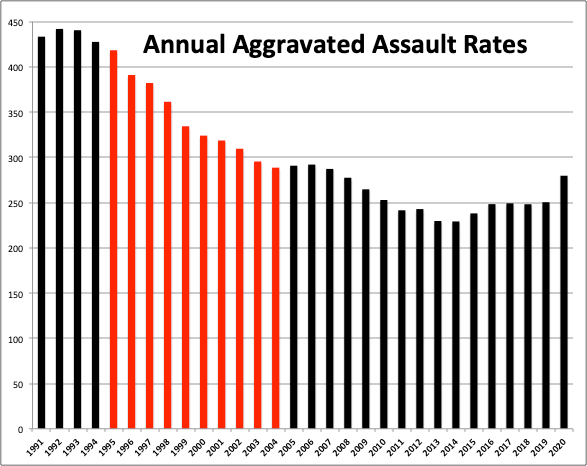Today in the House of Representatives, 213 Democrats (no Republicans) are pushing legislation to prohibit Americans from acquiring rifles, shotguns, handguns, and ammunition magazines like those owned by tens of millions of their countrymen. The House Judiciary Committee has approved the bill—all Democrats voting for, Republicans against. The next step is for the bill to be voted on by the entire House.
The Supreme Court has ruled that the Second Amendment guarantees the right to arms “in common use,” and that outlier gun laws are constitutionally impermissible, but Democrats don’t care. Their goal is civilian disarmament, which has a dark history.
In The Samurai, The Mountie, And The Cowboy, a comparison of gun ownership and gun laws in the three countries indicated, David Kopel, of the Independence Institute, notes that in 1588, the emperor of Japan decreed “The people in the various provinces are strictly forbidden to have in their possession any swords, short swords, bows, spears, firearms, or other arms. The possession of unnecessary implements makes difficult the collection of taxes.”
In The Right To Bear Arms: A Constitutional Right Of The People Or A Privilege Of The Ruling Class?, America’s most important Second Amendment scholar, lawyer Stephen P. Halbrook, notes that in 1662, King Charles II of England disarmed people suspected of opposing his rule. England’s most famous jurist, Sir William Blackstone, disapprovingly observed that the confiscation of arms was for “the prevention of popular insurrections and resistance to the government.”
In Twelve Who Ruled: The Year Of Terror In The French Revolution, the late Professor of History Emeritus at Yale University, Robert Roswell Palmer, describes how Western Civilization’s first leftist dictatorship wielded its power. The city of Lyons resisted the Left’s revolution, was thereafter occupied by the French army, and Georges Couthon (one of the members of the dictatorship’s misnamed Committee of Public Safety) “on entering the city naturally ordered the inhabitants to disarm themselves. . . . He divided the rebels into three classes, those who still bore arms when captured, those who had held civil employment under the rebellious municipality, and those who had simply been ‘misled’. . . . Revolutionary tribunals were set up, by which, after due conviction, culprits of the first class were to be guillotined, those of the second class were shot, and those of the third class released after recanting their errors.”
The executions of the Left’s political opponents were overseen by another committee member, the ex-actor Jean-Marie Collot d’Herbois, a “vehement, emotional and vulgar man, craving the center of the stage, dramatizing and gesticulating and bellowing when excited,” a description fitting the Texas Democrat Party’s candidate for governor this year, “Beto” O’Rourke. Collot had 1,880 residents of Lyons murdered for what today would be considered “insufficient wokeness.” O’Rourke, who supports civilian disarmament in America, satisfies his murderous aspirations by fantasizing about running over little children with his car.
In the 20th century, leftist dictatorships in the Soviet Union, Nazi Germany, mainland China, Vietnam, Cambodia, North Korea, and Cuba followed the example of Jacobin France: disarmament, followed by the mass murder of political opponents.
In English-speaking countries other than the United States, governments don’t need to murder anyone to remain in power. As a British Royal Marine once explained, most people in those countries believe that if the government is doing something to do them, it must be for their own good. Thus, like the people of several western European countries, they are eager to do what they are told, whether it’s to turn over firearms or wear masks and submit to multiple “vaccinations” and “boosters.”
Unlike the dutifully compliant peoples of the other English-speaking countries, Americans—especially when the other fellow’s political party is in power—tend to distrust the government and the people who elected it. That and the fact that—at least in jurisdictions not plagued with well-organized Democrat political machines—elections have been honest, forces Democrats to try to convince “independent” and marginally conservative voters—who often decide the outcomes of elections—that incremental restrictions on the right to arms, while suspicious on their face, are in their interest.
Thus, for decades, Democrats have used the fear of crime to dupe Americans into going along with one or another “gun control” law. Campaigning for the National Firearms Act in the 1930s, Franklin D. Roosevelt claimed “Federal men are constantly facing machine gun fire in the pursuit of gangsters,” while his attorney general, former Democratic National Committee Chairman Homer Cummings, claimed “there are twice as many people in the underworld today armed with deadly weapons, in fact, than there are in the Army and the Navy of the United States combined.”
Then there was Lyndon B. Johnson, nicknamed “Landslide Lyndon” because he stole the 1948 Democrat primary for the U.S. Senate with the discovery—several days after all legitimate votes had been counted—of previously unknown “votes” cast by “people” who, after real people had voted, signed in at one voting precinct in Jim Wells County, in alphabetical order, in the same handwriting, with the same pen. The newly-discovered “voters” included some who were buried in local cemeteries, others who later swore they didn’t vote, and others who later said that in that neck of the woods, run by Democrat political boss George Parr, you lived longer if you kept your mouth shut. LBJ, whom Jacqueline Kennedy thought was involved in JFK’s assassination, signed the Safe Streets Act and the Gun Control Act into law in 1968, and claimed the laws would reduce crime (they didn’t).
In his 1995 State of the Union address, pathological liar Bill Clinton claimed that police officers were “under a hail of assault weapon attack,” when during the previous 10 years about five times as many law enforcement officers had been killed with their own guns, as with firearms labeled as “assault weapons” by Democrat-sponsored legislation that Clinton had signed into law the previous year.
More recently, nominal president Joe Biden, also a pathological liar, claimed that “mass shootings” decreased while the federal “assault weapon ban” of 1994-2004 was in effect, when, instead, economist John R. Lott, of the Crime Research Prevention Center, reports “There was no drop in the number of (“mass shooting”) attacks with assault weapons during the 1994 to 2004 ban.”
What about violent crime generally?
The four categories of violent crime under the Uniform Crime Reporting system are murder and non-negligent manslaughter (1.6% of total violent crime in 2020, the most recent year of data available), forcible rape (9.6 percent), robbery (18.5 percent), and aggravated assault (70.2 percent).
Total violent crime in the United States hit an all-time high in 1991 and declined significantly by the time the “ban” took effect on September 13, 1994. It continued to decline while the “ban” was in effect, and after the “ban” expired in 2004, while the number of privately-owned firearms and, in particular, “assault weapons” soared. (The number of “assault weapons” privately owned in the United States today is estimated at 24 million.)
No one—not even the most dishonest Democrat—attributes rape, robbery, or aggravated assault to “assault weapons,” so if the “ban” reduced crime, it should have reduced murder, but not those other three types of violent crime. However, from 1994 to 2004, the years the “ban” was in effect, robbery dropped 43%, murder 39%, aggravated assault 33%, and rape 18%.
The “ban” expired in 2004, purchases of firearms previously defined as “assault weapons” increased to several million annually, and violent crime continued to decline. From total violent crime’s all-time high in 1991, through 2014, when murder fell to an all-time low (10 years after the “ban” expired”), robbery dropped 63%, murder 55%, aggravated assault 47%, and rape 37%. In the charts that follow, the red bars show the years the “ban” was in effect. Rates shown are the numbers of crimes per 100,000 population.
Note that in 2014, the nation’s murder rate fell to an all-time low, concurrent with the number of “assault weapons” (and other firearms) at that time having risen to an all-time high. Note also that murder increased 27% and aggravated assault 12% from 2019 to 2020, the year that Democrats encouraged leftist riots, Democrat District Attorneys began refusing to prosecute people arrested for violent crimes, and Democrat city governments began defunding police departments.
Also for many years, the FBI has reported that upwards of 30 percent of murders are committed without firearms (mostly with knives, bludgeons, and bare hands) and 2-3 percent are with rifles of any sort, though the type of firearm used in some murders is not reported. In the most recent five years of such data (2015-2019), 30 percent were committed without firearms, two percent with rifles, and 20 percent with firearms of type not reported. If rifles account for the same percentage of firearms not reported, as they do of firearms that are reported, they would account for only three percent of murders.
Copyright © Mark Overstreet 2022






